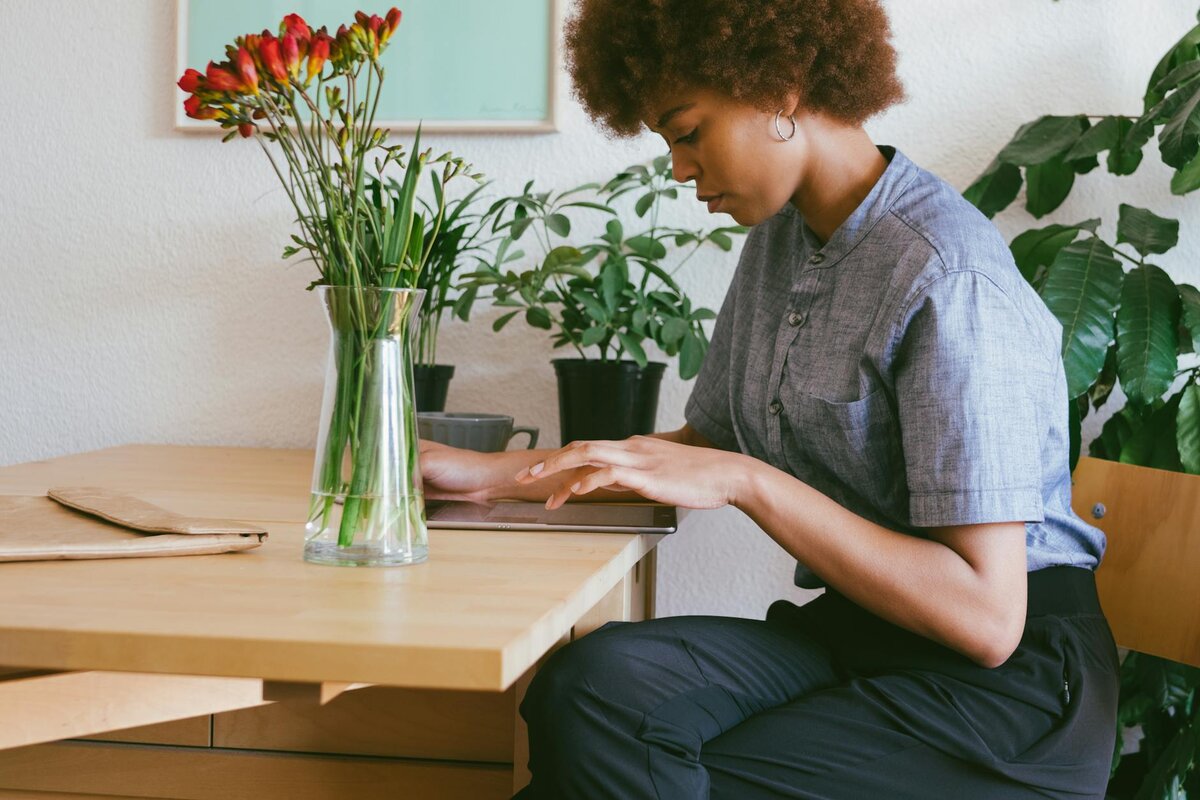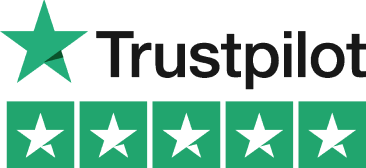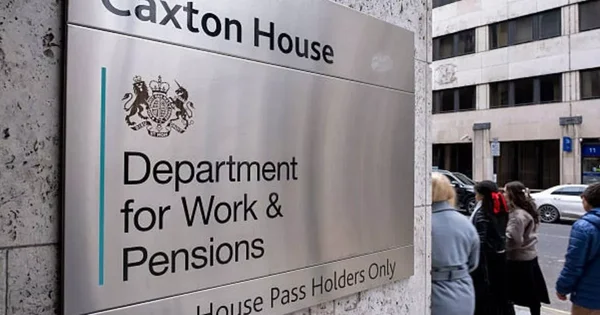Let’s Break This Down Together...
Selling handmade items online sounds simple, but the tax side of things can get confusing fast. You might be wondering if your side hustle is actually a business and what HMRC expects from you.
This article walks through when you need to declare income, how the £1,000 trading allowance works, and what taxes apply. We’ll also look at allowable expenses, VAT, and what records you need to keep.
By the end, you’ll know where you stand, what to do next, and how to stay on HMRC’s good side while doing what you love. Let’s dive in.
Introduction to Selling Handmade Items
Selling handmade items online has become a popular way for creative individuals to earn extra income and reach a huge number of potential buyers.
Platforms like Facebook Marketplace, eBay, and other online marketplaces make it easy to list your crafts, from jewellery and clothing to home decor and art. Social media and online platforms allow you to connect with interested buyers, showcase your work, and manage sales from the comfort of your home.
However, as a small business owner or even a casual seller, it’s important to understand the tax implications of selling handmade items online. Any income you make from online sales whether through Facebook Marketplace or other platforms needs to be declared to HMRC.
You may be required to pay income tax on your profits, and depending on your total sales and business activities, you could also need to pay National Insurance Contributions (NICs) and value-added tax (VAT). Staying informed about your tax obligations will help you avoid unexpected bills and keep your business running smoothly.
When Does Selling Crafts Become Taxable?
The key question most crafters ask is: “When do I need to pay tax on my Facebook Marketplace sales?” The answer hinges on whether HMRC views your activity as a hobby or a business. HMRC distinguishes between casual sellers, who sell goods occasionally, and those who are considered to be trading, with regular making sales or running a side hustle.
If you’re making things primarily for fun and selling occasionally to recoup costs, you might still be in hobby territory. But if you’re regularly making items with the intention to sell and make profit, HMRC will likely consider this a business. At this point, your activity is considered trade and you may need to declare income and pay tax.
The £1,000 trading allowance is your friend here. If you sell goods as part of a side hustle and your total sales exceed the threshold, your income must be reported to HMRC.
Once you exceed that £1,000 mark, you’ll need to register for Self Assessment and report your income. All income above the allowance must be declared and reported to HMRC. You can still deduct allowable expenses from your taxable profit.

Tax Implications of Selling Handmade Items
When your crafting becomes a business, you’ll need to register as self-employed with HMRC. This should be done by 5th October after the tax year in which you started trading.
Your profits (sales minus expenses) will be subject to Income Tax and National Insurance contributions. The rates depend on your total income, including any employment earnings. Make sure you understand your taxes and filing requirements.
Keep detailed records of all sales through Facebook Marketplace. Screenshots of transactions, messages about orders, and payment confirmations are all valuable evidence. Accurate record-keeping is essential, as official reports from HMRC emphasize the importance of tracking income and being able to provide report details if requested.
Remember that Facebook doesn’t report your sales to HMRC, but that doesn’t mean they’re invisible. New regulations require some online platforms to collect and report details of sellers' transactions and income to HMRC, and official reports highlight the need for compliance.
HMRC has sophisticated data-gathering tools and can investigate online sellers. If you need to file a Self Assessment tax return, the deadline for submitting your tax return and paying any taxes owed is usually 31 January following the end of the tax year.
Materials and supplies used directly in your creations are tax-deductible. This includes fabric, yarn, paint, tools, and packaging materials used exclusively for your business.
National Insurance Contributions and Online Sales
When you start making regular online sales, National Insurance Contributions (NICs) become an important part of your tax obligations. If your profits from selling handmade items exceed £6,475 in a tax year, you’ll need to pay Class 2 NICs, which are set at a weekly rate. If your profits are higher, you may also be liable for Class 4 NICs, which are calculated as a percentage of your taxable profits.
As a self-employed seller, you’ll need to complete a Self Assessment tax return each year to report your income, sales, and business expenses.
The trading allowance can help simplify your tax calculations if your total income from trading is under £1,000, but if you exceed this, you must keep detailed records of your expenses to claim allowable deductions. Accurate record-keeping ensures you only pay tax on your actual profits and helps you stay compliant with HMRC requirements.

From Hobby to VAT: What Craft Sellers Need to Know
Value-added tax (VAT) is another key consideration for craft sellers operating as a business. If your annual turnover from selling goods and providing services exceeds £85,000, you are required to register for VAT with HMRC. Even if your sales are below this threshold, you can choose to register voluntarily, which allows you to reclaim VAT on eligible business expenses.
Once registered, you’ll need to charge VAT on your sales and submit regular VAT returns to HMRC. Many small businesses find the VAT flat rate scheme helpful, as it simplifies the process of calculating and reporting VAT, but you must check that your business qualifies for this scheme.
Keeping clear records of your sales and business expenses is essential for accurate VAT reporting and for making the most of any VAT you can reclaim.
Calculating Your Craft Business Tax
Working out your taxable profit is straightforward: sales income minus allowable business expenses equals taxable profit. For example, if you sell £2,000 worth of handmade jewellery and spend £800 on materials, packaging, and postage, your taxable profit would be £1,200.
This formula applies whether you sell jewellery, artwork, or knitted items. Allowable expenses include materials, packaging, postage, and a portion of your home bills if you work from home. Even Facebook advertising costs can be deducted.
Keep all receipts, preferably digitally. A simple spreadsheet or basic accounting app can help track everything if you’re just starting out.
If your craft business grows significantly, you might need to register for VAT. This becomes mandatory once your taxable turnover exceeds £85,000 in a 12-month period.
I learned this lesson the hard way when my weekend candle-making hobby suddenly took off during lockdown. By the time I realised I’d crossed the tax threshold, I had three months of untracked expenses to reconstruct!

Record Keeping and Paying Tax
Good record keeping is the foundation of a successful craft business, especially when selling through online marketplaces like Facebook Marketplace and eBay. You should keep detailed records of every sale, including the date, amount, and platform used. It’s equally important to track all business expenses, such as materials, equipment, packaging, and marketing costs.
Using accounting software or a simple spreadsheet can help you stay organised throughout the tax year. When it’s time to pay your tax, you’ll need to complete a Self Assessment tax return, declaring your total income and expenses.
The deadline for submitting your tax return and paying any tax owed is usually 31 January following the end of the tax year. Staying on top of your records and deadlines will make paying tax straightforward and stress-free.
Facebook Marketplace Fees and Payment
Facebook Marketplace is a user-friendly platform for selling handmade items, and listing your goods for sale is free. However, Facebook may charge small fees for certain services, such as payment processing if you use their checkout system.
As a seller, you’ll need to decide how you want to receive payments options include PayPal, bank transfer, or Facebook’s own payment features. To ensure a smooth selling experience, make sure you follow Facebook’s commerce policies, which cover what items can be sold, how to list items, and how to communicate with buyers.
Providing clear descriptions, high quality photos, and prompt responses via Facebook Messenger can help you attract more customers and complete more sales. By keeping accurate records of your sales and any fees paid, you’ll be well-prepared to report your income and manage your tax obligations as your business grows.
Special Considerations for Different Crafts
Food items like homemade jams or cakes have additional regulations beyond tax. You’ll need to register with your local authority and possibly get food hygiene certificates.
Digital craft products like printables or patterns have different VAT rules compared to physical goods. This is especially true when selling to EU customers post-Brexit, and may also involve different considerations if you run an ecommerce business or sell through your own website.
Upcycled items have interesting tax implications. If you buy something for £5, transform it, and sell for £30, your income is the full £30 but you can claim the £5 as an expense. If you sell personal possessions or unwanted items for more than you paid, you may be liable for capital gains or capital gains tax, depending on the value and nature of the items.
Commission work where customers provide materials may still count as taxable income. Your material costs will be lower, but the labour value remains taxable. Providing a custom craft service may have different tax implications, so it’s important to clarify whether you are offering a product or a service for tax purposes.

Crafting Trouble: The Tax Mistakes That Could Cost You
Many crafters don't realise they've crossed the hobby/business line until they're well over the threshold. This can lead to unexpected tax bills and potential penalties. Forgetting to track small expenses adds up over time. Even small purchases like a special needle or a particular shade of paint are legitimate business costs.
Using materials for both personal projects and items for sale can complicate your accounts. Try to keep business supplies separate or record when supplies are used for business.
Missing the registration deadline can result in penalties, even if you didn't realise you needed to register. HMRC expects you to know when you've become a business.
Keep the Joy, Ditch the Tax Stress
Understanding the tax implications of selling your handmade items doesn't need to take the joy out of your craft business. With simple record-keeping habits, you can stay compliant without stress.
HMRC is increasingly focusing on online marketplace sellers. It's better to get your tax affairs in order sooner rather than later to avoid unwelcome surprises.
Remember, if your craft business is growing, getting professional advice could save you money. An accountant might identify deductions and allowances you would otherwise miss.
Pie tax: Simplifying Handmade Items Tax
Juggling your creative passion with tax obligations shouldn't eat into your crafting time. Pie tax helps marketplace sellers track income and expenses in real-time, giving you a clear picture of your tax position year-round.
Our app automatically identifies craft-specific deductions many sellers miss, from home studio space to specialised tools and materials. We understand that crafters often balance their creative business with other income sources.
When tax season arrives, we connect directly with HMRC systems for simple, accurate filing without the usual stress. Our tax calendar sends timely reminders so you never miss an important deadline while busy creating.
For seasonal sellers who see spikes around holidays, our smart projections help you set aside the right amount for tax bills. Explore the Pie tax app if you'd like to make your craft business admin as satisfying as your creative work.

Quick and Easy Guide to Add Expenses and Check Real Time Calculations
Follow these steps to add expenses and track real time tax calculation in the Pie app
Swipe right on any eligible transaction to add it as an expense you want to declare on your tax return, moving it to the ‘expense’ tab.Step 1

You can view your real-time tax figures on the home page of the Pie App. Simply log in into the app, and your up-to-date tax calculations will be displayed prominently, allowing you to see your current tax status at a glance.Step 2










